The ASUS Zenbook UX305 Review
by Brett Howse on March 25, 2015 8:00 AM ESTBattery Life
Not everyone requires battery life in a laptop. For some, a laptop is something you move from desk to desk, and can keep power close at hand. However even for those types of people (like me) there are going to be times where battery life is much more important, such as on a long trip. We have seen the bar raised considerably in the last several years with respect to battery life.
The ASUS UX305 has the power sipping Core M processor, whose 4.5W TDP means that the CPU/SoC's power consumption is kept quite low. But that is of course only part of the story. The display is a huge driver in energy use, and as we have seen in recent reviews, high resolution displays, although beautiful to look at, can use much more energy than those that sport a lower resolution. Unlike our Dell XPS review, we do not have both the low and high resolution models available for comparison, so for now we will focus on the 1080p model that is available.
To test battery life, we have two workloads. Our light test is light web browsing, and our heavy test increases the number of pages loaded, adds a 1 MB/s file download, and has a movie playing. We set all displays to 200 nits.
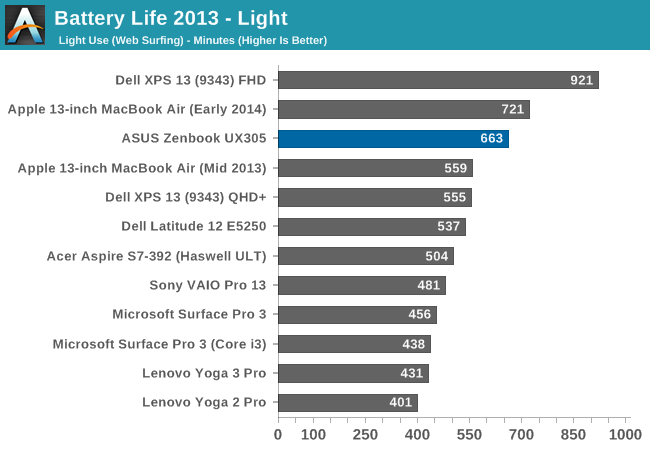
ASUS has packed tremendous battery life into this tiny fanless laptop. At just over 11 hours, it is one of the best results we have seen from any device, and it is all done on just a 45 Wh battery. It is not quite as efficient as the Dell XPS 13, despite the Dell having a 15 watt CPU, but the CPU is just a small part of this test, as it is generally not under much load. To see how the device fares under a heavier load, we will take a look at our Heavy test next.
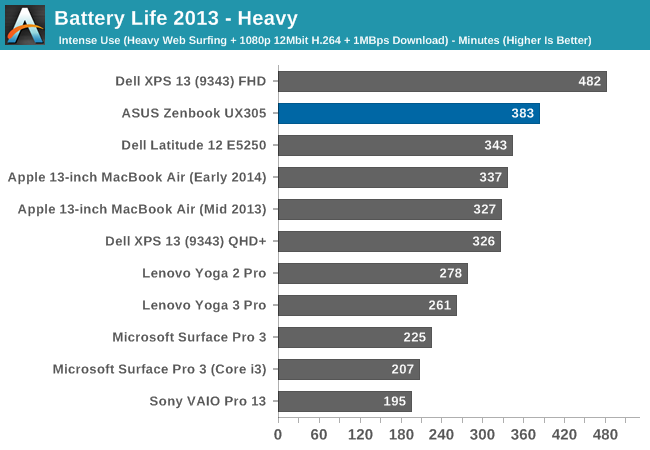
Once again the ASUS performs very well. Despite the thin design, the UX305 has plenty of battery life to handle most workloads with ease. Once more it doesn't quite measure up to the XPS 13, but that device also has a larger battery. To compare all of our devices for energy efficiency with the battery size removed from the equation, we have our normalized graphs.
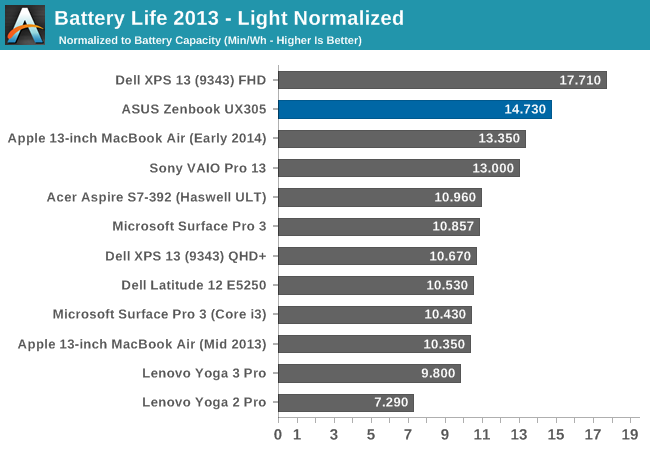
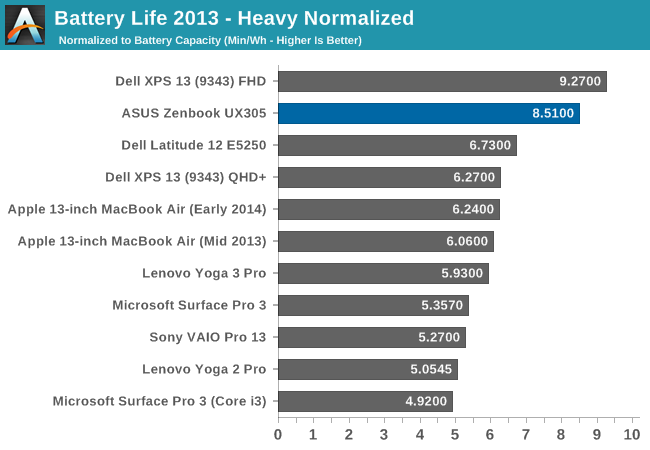
ASUS has done a great job on the overall platform efficiency of the UX305. While not quite class leading, it is quite a bit higher than most devices on the market. With just a 45 Wh battery, the UX305 does an outstanding job.
Charge Time
The other factor in mobility is charge time. Long battery life is great, but if you can top up quickly it can really extend the range of a notebook. The UX305 comes with a 45 watt charger, which seems to be fairly typical these days. There is certainly a trade-off to be made between charging speed and portability, because no one wants to bring a 3 lb charger along with a 2.6 lb notebook.
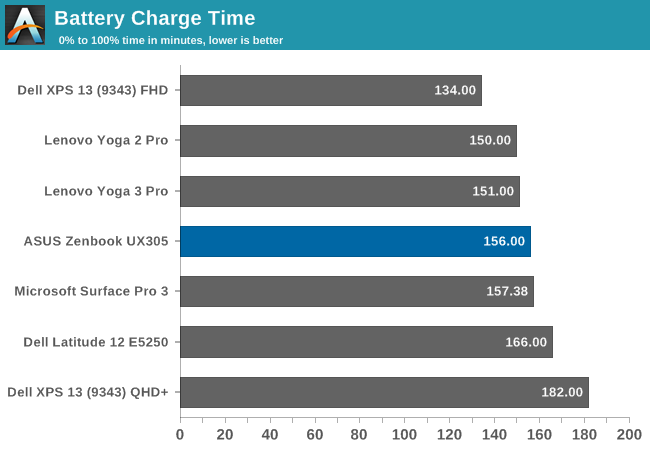
At 156 minutes, the UX305 falls right in line with most devices. Although there is little stopping someone from providing a faster charging rate, it seems most OEMs have settled on at or around this score as a target.
The UX305 charges very consistently, with it only leveling out well after 80% charge.
ASUS would be able to improve these scores with a higher wattage charger, but as compared to its peers it is about the same.
Wi-Fi Performance
ASUS has outfitted the UX305 that we have in for review with the Intel Dual Band Wireless-N 7265 wireless networking chip (not to be confused with the Wireless-AC 7265), which also includes Bluetooth 4.0 support. The change from the 7260 adapter seen predominately last year is a drop in power consumption. With a 2x2:2 design, the 7265 can connect at a maximum of 300 Mbps on 5 GHz. ASUS will be offering an 802.11ac card in the higher priced version of the UX305 which comes with the 3200x1800 display.
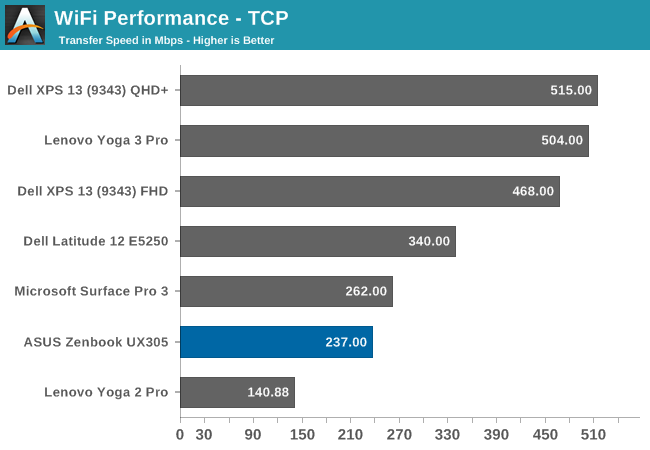
With just 300 Mbps maximum connection speed, the UX305 is sorely outclassed by devices which offer 802.11ac. ASUS is good enough to include a USB 3.0 Ethernet adapter though, for those that require more speed. Using the adapter, I was able to achieve 902 Mpbs transfer rates on our Wi-Fi benchmark. Frankly, I do appreciate the offer, but the money spent on the adapter could have just been used to give the UX305 802.11ac across the board, rather than just on the higher priced model. It is trivial for people to purchase a USB 3.0 Ethernet adapter if they need it, and plug it in, but replacing the Wireless card inside one of today’s laptops is a lot more challenging. This, like the display which raises the laptop, is one decision I have to question about the UX305.
Speakers
In their press materials ASUS has made a big deal about the engineering effort put into the speakers in the UX305, which were developed by the Golden Ear team at ASUS. As stated earlier, the UX305 sports two downward firing speakers, housed in 1.7 cubic centimeter chambers. The speaker dimensions are 25 x 9 x 3 mm and include a “high-intensity” coil. They also include some equalizer software to assist the user in setting the equalizer for various modes, such as VoIP calls, or music.
The audio solution is provided by Conexant and is a 2075x variant, so it should have around 2.8 watts of output power split between the two channels.
All of this being said, playing music I was only able to achieve around 76 dB (A weighted) which is about typical for this type of thin and light device. The outlier here is the Dell XPS 13 which manages 86 dB on the same music track. 10 dB means that the Dell is twice as loud.
However maximum volume is only one side of the equation. We will take a look at the frequency response of the speaker design next.
As you can see from the graph, there is little in the way of low end response, which I suppose is not unexpected for such small speakers. There is really not much in the way of audio response at all until after 200 Hz. There is also a big dip right at 1500 Hz. Overall, these are not the greatest speakers, but they should be fine for watching a few videos. Headphones would be needed for anything where you want to hear the full audio range though.


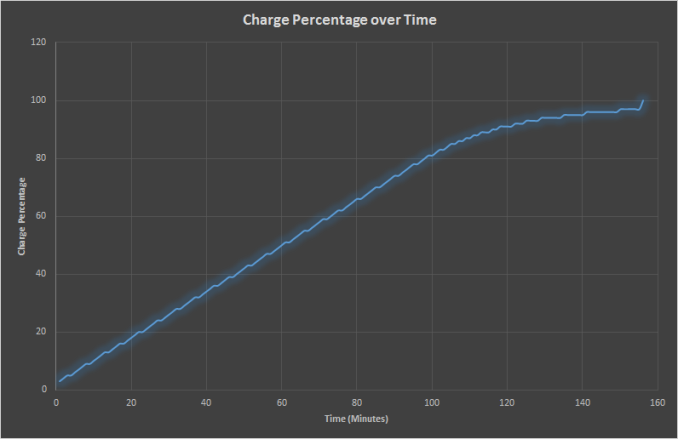
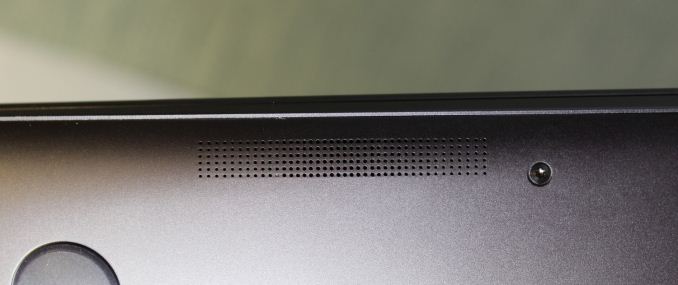
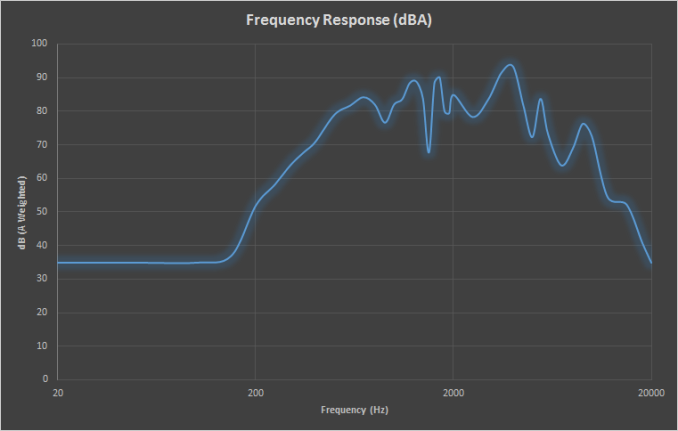








164 Comments
View All Comments
Klug4Pres - Wednesday, March 25, 2015 - link
Fair enough. I suppose I feel like we used to have a sane product line up for laptops, where 3 or 4 lbs was as light as anyone needed, then you had 5-6 lb machines that were workhorses with good expandability and possibly better value if you didn't need to shed all the weight, and then desktop replacements that could be as heavy as they needed to be.Now everything seems to be getting absurdly slim for no obvious reason, while maintainability and expandability are dirty words.
kingpotnoodle - Thursday, March 26, 2015 - link
Most people consider 3-4lbs a weight to drag about, add into that a charger brick and the the chunky bag and you're quite weighed down. Contrast that to a laptop like this which has an all-day battery life (or much smalller charger) and slips into a thin sleeve case, sure you have to make sacrifices but it's all about priorities. There are plenty of fat, more upgradeable laptops around as well in all shapes and sizes. Once size doesn't fit all, never has.Dorek - Thursday, March 26, 2015 - link
Anyone who considers 3 pounds "a weight to drag about" must be from a planet where gravity is lower. 3 pounds is NOT HEAVY.bznotins - Wednesday, March 25, 2015 - link
Try lugging a 5lb laptop + brick + accessories across a dozen airports over the course of a month and you'll appreciate every ounce of weight savings you can muster.Try opening a 14" laptop on a plane in coach when the person in their seat reclines. You'll appreciate <13" then.
But if you're the DTR type, then yeah, Intel hasn't been focusing on you. But there are options out there from Clevo and Maingear, among others.
V900 - Wednesday, March 25, 2015 - link
I can understand people want a lighter machine, but you have a point about it going too far, and become a ridiculous race to be half an ounce lighter than the competitor.Once they got under 4 pounds it really ceases to have a point, and they could have invested the weight difference towards either performance or longer battery life. It's not like you can even tell the difference between a 2 pound laptop and a 3 pound laptop, especially once it's inside a bag. If carrying half a pound or a whole pound of additional weight really means that much, and makes that much difference, toss out that half liter bottle of water you probably got in your bag. BOOM! A whole pound of weight saved! Is the bag really that much lighter to carry now? Nah, thought not.
FlushedBubblyJock - Wednesday, March 25, 2015 - link
You forgot to factor in the self-centered elitist narcissism that applauds loudly inside their heads every time they haul out their precious and hope others notice.Thus a tenth of an ounce and one shiny polish point is a king's ransom.
kevith - Wednesday, March 25, 2015 - link
Lol! :-)kmmatney - Wednesday, March 25, 2015 - link
I've been carrying around a heavy 17" laptop for the last 8 years (2 different laptops). I would love to have a lighter laptop, but don't want to give up the 17" screen. I'm a heavy traveler, approaching 1 million miles on United, but my laptop case has wheels and it's not that big a deal to lug around. I wish they still made 17" laptops with 1200p screens.Duncan Macdonald - Wednesday, March 25, 2015 - link
As you did the calibration for your test machine - would it be possible for you to provide an ICC profile ? (This would also be useful for other devices with poor initial calibrations that you test.)djvita - Wednesday, March 25, 2015 - link
anandtech should post the RGB levels/ profile they used to calibrate, for goodwill of buyers =)